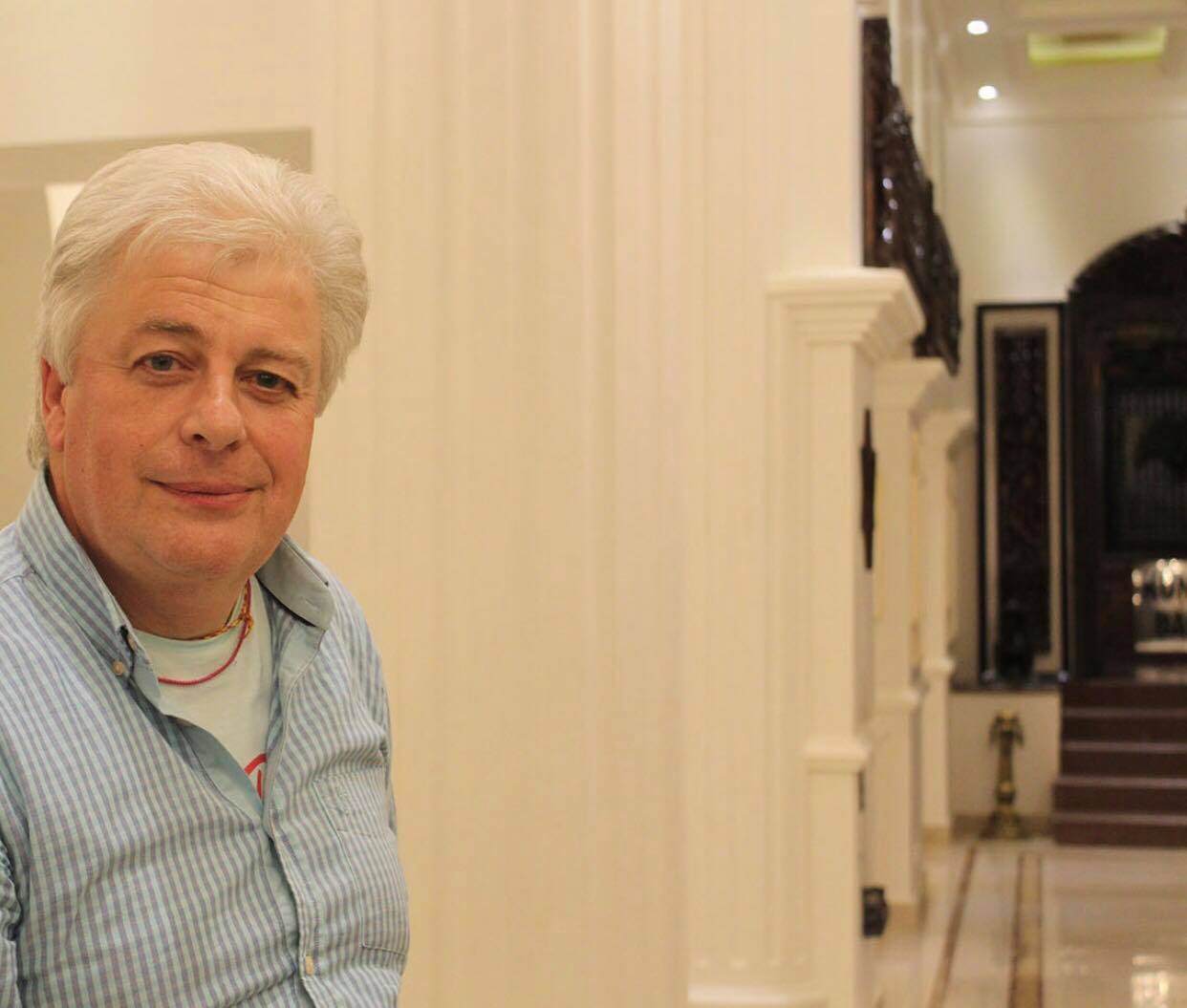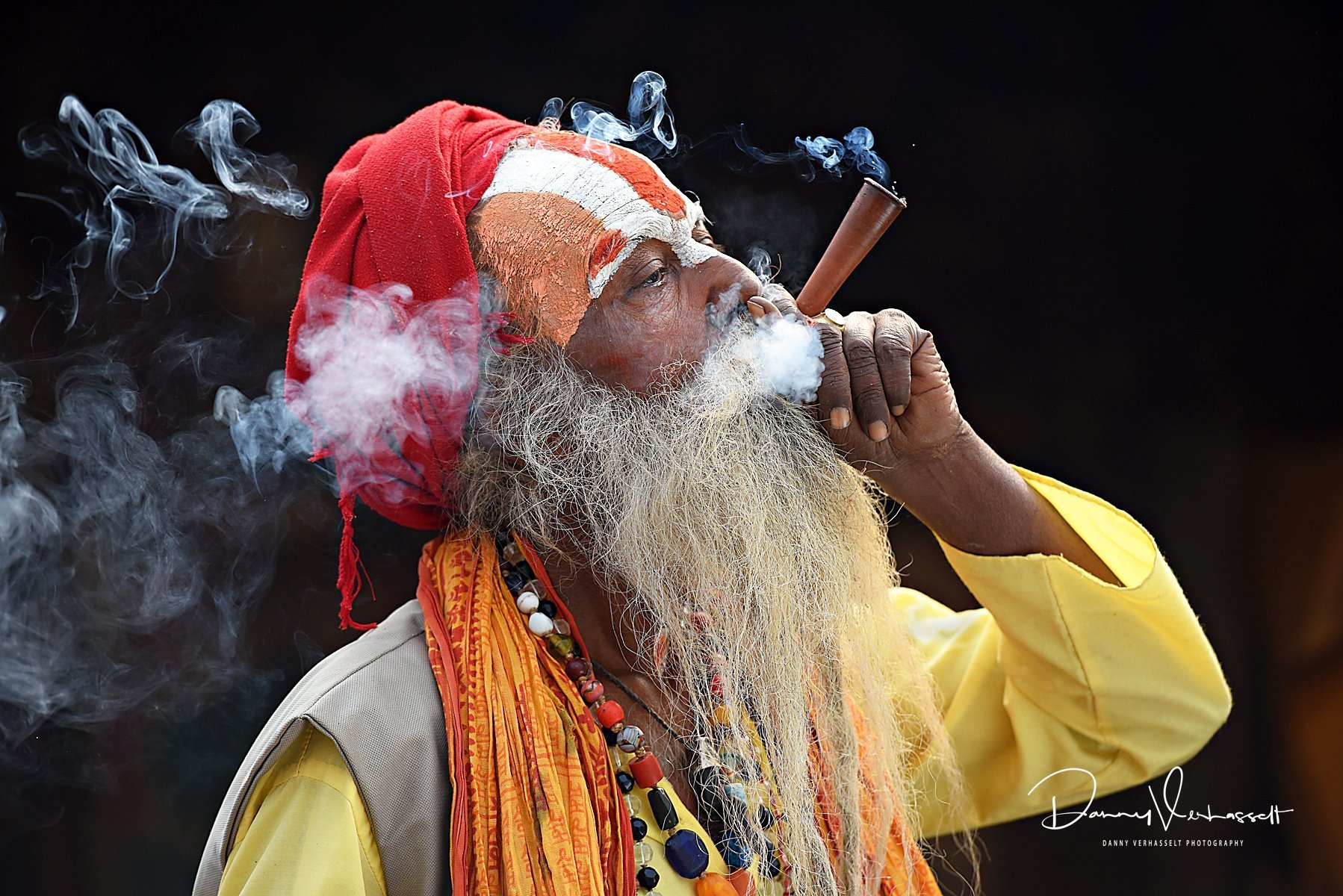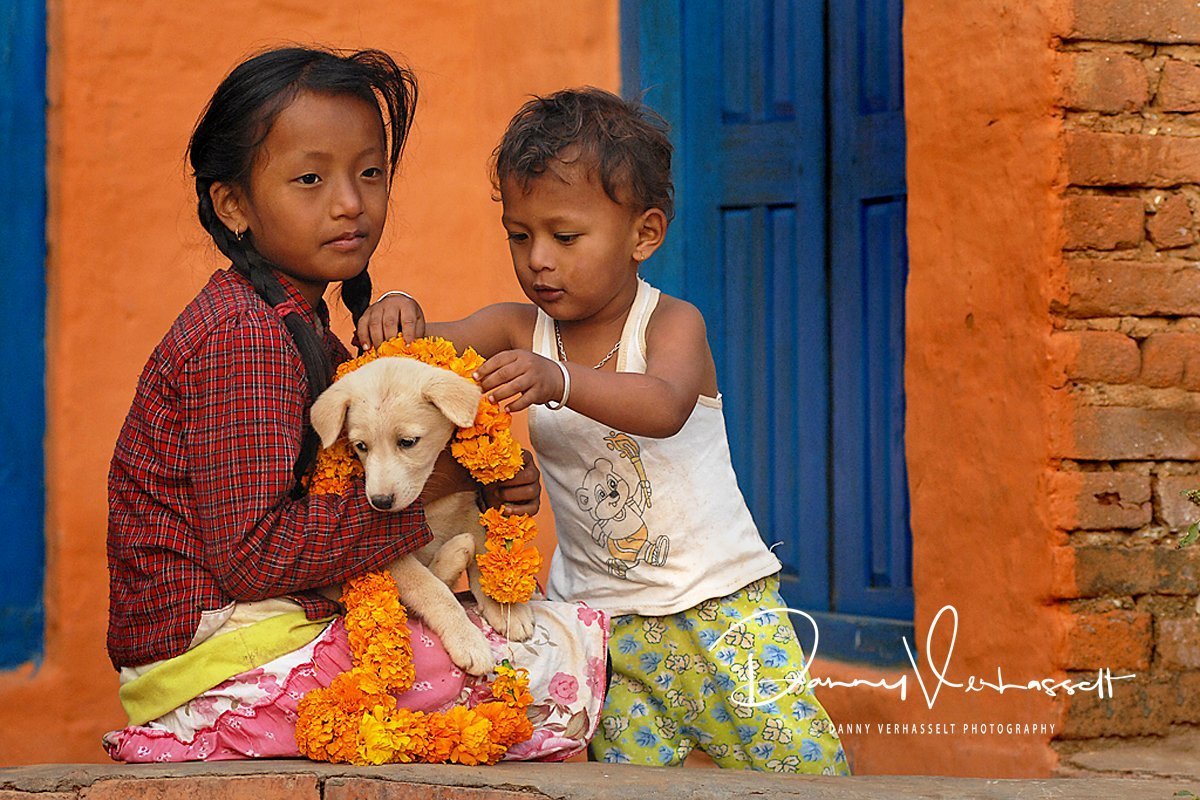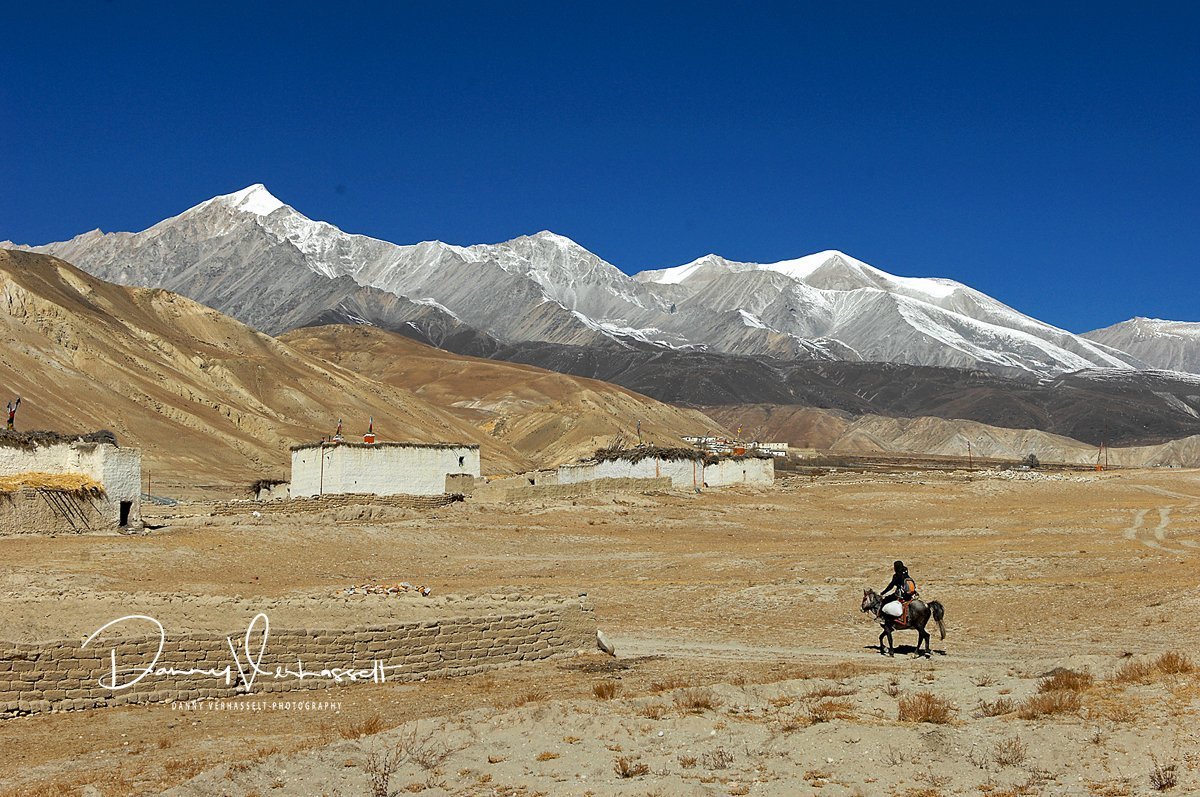
Nepal Through the Lens of Danny; a Belgian Photo Journalist
Danny is a Belgian photographer who has visited Nepal about 14 times. In a conversation with him, he shares his experience and life in Nepal. he first visited Nepal in 1994.
As a photographer, is there any difference between the real world and the world in lens?
Since the era of digital photography and image manipulation, it’s not always for sure that what the photo will show is a representation of the real world.
But from my side, being a photojournalist and travel photographer, I can assure you that what I see is what you get. It’s my passion to show my viewers the real world, just like I experienced it. The best pictures can give a specific feeling to the viewers when shown.Expressions on people’s faces, the play between light and shadow, lines and structures are all so important to create the perfect image.
It’s true that sometimes watching through the lens of my camera makes it easier to deal with specific situations. Some people say it works like a kind of protective shield, and personally I have to agree on this.
Especially when you’re taking pictures of extreme situations, like I remember photographing in Nepal some months after the earthquake in 2015.
You feel so sad witnessing the situation in which people are housed, witnessing the condition of the cultural heritage of Nepal, but in your mind you know you have to show your viewers the actual situation how you’re experiencing it at that time. Of course sometimes the ‘protective shield’ is not thick enough, and it makes me feel sad and it gives me the strength to help where possible.But I’m happy that most of the time I can show the beauty of a country, and especially of Nepal and its always smiling citizens.
Explain us about the three best pictures you have clicked? (Also if you can send their images)
During my 14 visits to Nepal I have taken thousands of pictures, so defining my 3 ‘best’ pictures is not an easy task. Of course every photographer has his favorite pictures, but what keeps us going is the insatiable search for the perfect image.
I’m quite happy with these
A sadhu is smoking marijuana with his typical ‘chillam’.
This picture was taken during the Maha Shivaratri Festival at the Pashupatinath temple.I love the light, the way the smoke is driven by the wind, the expression on his face and the colorful dress of this Holy man.

Two children are honoring their dog during Tihar festival.
I love to travel in Nepal during festival time. So during Tihar I was witnessing this festival’s second day or ‘Kukur Tihar’, when I noticed two children who blessed their dog by the use of a garland.
The kids didn’t witness me taking pictures and they were so focused on their act of honor.I love the innocence and joy on these kids faces, and of course the dog with his colorful garland completes the picture.

A lonely horseman on his way in Mustang.
During my different visits to Nepal I’ve also did some trekking.
After Annapurna, Helambu, Everest, Langtang and lower Mustang trek, I finally got into Upper Mustang.Upper Mustang is personally the most beautiful trek I’ve ever done.This image shows the beauty of nature in combination with the nothingness of men within the unity.

What changes have you seen in Nepal since your first visit and the recent one?
My first visit in Nepal was in 1994, my most recent one was in March earlier this year.
Of course the impact of the 2015 earthquake, has totally changed the Kathmandu valley and the Solokhumbu area.The damage to the cultural heritage is something that everyone can witness even until today.The scaffolding at the Durbar Squares of Patan, Bhaktapur and Kathmandu is something you can’t ignore.The area around the Swayambu temple is also still like a construction site.Bouddhanath stupa is again resurrected in its original state.
Last month I went to visit Palanchowk, once a very colorful village about 15 km from Dulikhel. It was really heartbreaking to see how the entire village has been swept away by the forces of nature during the earthquake.
I admire the courage of the Nepalese people who’re busy rebuilding their houses.
At the moment most of the villages in the Valley of Kathmandu are recreated into a construction site. The typical old Newari houses are meanwhile changed into brick houses.
Otherwise I notice the government is doing their best to start repairing some of the roads.The way from Mugling to Chitwan is actually in very good condition, and I hope more main roads will be build that way.
I also notice a big difference in mentality between the younger and the older generation, but that’s same all over the world.This is particularly striking among mountain dwellers and city dwellers.
In the cities the youth stopped wearing the traditional Nepalese clothing, and jeans and T-shirts have taken over.
How would you link pictures and tourism?
Photography and tourism are 2 different activities, but can reinforce each other.In the past potential travelers had to delve into books to find their information about a specific country or city.
Now in this digital era, everybody has access to the internet, the most fast and accurate worldwide network with global information about different topics and also about traveling to specific destinations.
Photography is in that case very important to show the people what to expect when they would travel to a specific location.
I admire the task of the Nepalese Tourism Board using social media on daily base to promote Nepal as a touristic destination.The most beautiful pictures are appearing in their tweets, Facebook and Instagram messages.
I was also very much honored when the NTB used my pictures during their monthly photo exhibition at their headquarters in Kathmandu last March.
Personally, my priority exists out of showing the reality of a country.If you’re using digital image manipulation to make a hotel room appear larger, or to make a location look more attractive than in reality, than it’s equal to cheating people.
How do you think Nepal can magnify its tourism possibilities and strengthen its tourism industry?
When I witnessed the recent monthly figures of the number of tourists that visit Nepal, it can only make me happy to see these numbers are increasing every month. I notice NTB is doing its best to promote Nepal with different campaigns and especially now with the Visit Nepal 2020 campaign.It would be nice if the government continued to invest in renewing the roads to improve the accessibility of various interesting locations.
I noticed people are still busy repairing the damage to the cultural heritage after the 2015 earthquakes, but all sites are still accessible for the tourists.I heard about the plan to have the cultural heritage back to its original state by 2020.The present repair works at the international airport of Kathmandu will also give more chances to strengthen the tourism industry, just like the construction of a new international airport in Pokhara.
There’s still one major problem which will influence the touristic possibilities in Kathmandu, in particular the air pollution.I sincerely hope that the Nepalese government will take action to improve air quality.Nobody likes to constantly wear a mouth mask, not the Nepalese citizens, nor the tourists.
What is Nepal for you?
Nepal is like a second home for me. It always feels like coming home when I arrive in Nepal.During my visits, I met so many interesting people who became friends for life.During these 25 years I’ve been visiting Nepal, I have gained many new brothers and sisters, whom I always look forward to meeting again during my next visit.It is therefore a real pleasure to have met so many new people in Nepal thanks to my photography.
Even when I am in Belgium, I like to be around with my many friends within the Nepalese community. I love to promote Nepal in Belgium, among others in my position as general secretary of the Belgium Nepal Friendship Association.
Five best Nepali words you know?
Communication is so important in life and also in photography.I’m normally not the kind of photographer who sneaks up to his subject.
If I want to make a portrait, it’s important for me to communicate first with the person I want to photograph.If you do not always want to explain everything with your hands and feet, you need a basic knowledge of the language of the country you are visiting.
During the years I’ve learned some basic sentences to say hello and to show some interest by asking their name and how they’re doing.
Defining the 5 main words would be like:
- Hello or ‘Namaste’. Everybody all over the world appreciates to be greeted in their own language.
- Thank you or ‘Dhanyabaad’. If people take some time to pose for you, it’s obvious that you thank them.
- Look to me or ‘Yeta hera’. If you want to make a connection within a portrait, it’s important people look into your camera, to get the attention of the viewer.
- Can I take your picture or ‘Photo khicham’. People look surprised when you ask them in their own language if you can take their picture.
- See you again or ‘Pheri bhe Taulaa’. After taking the pictures I always say goodbye, and really hope to meet them again during one of my next trips.

